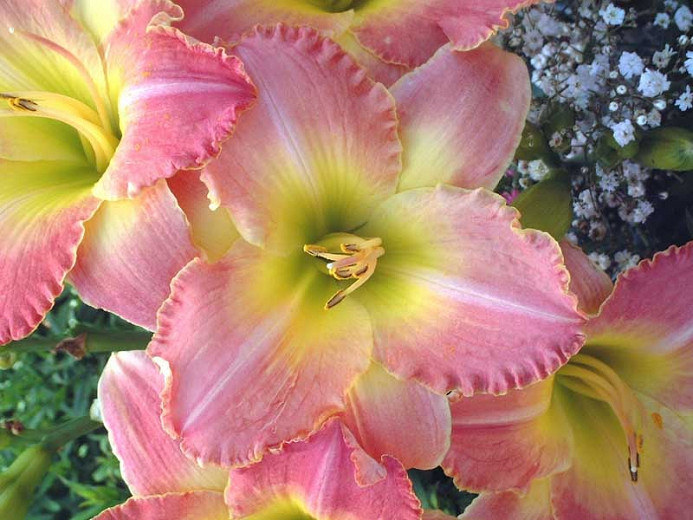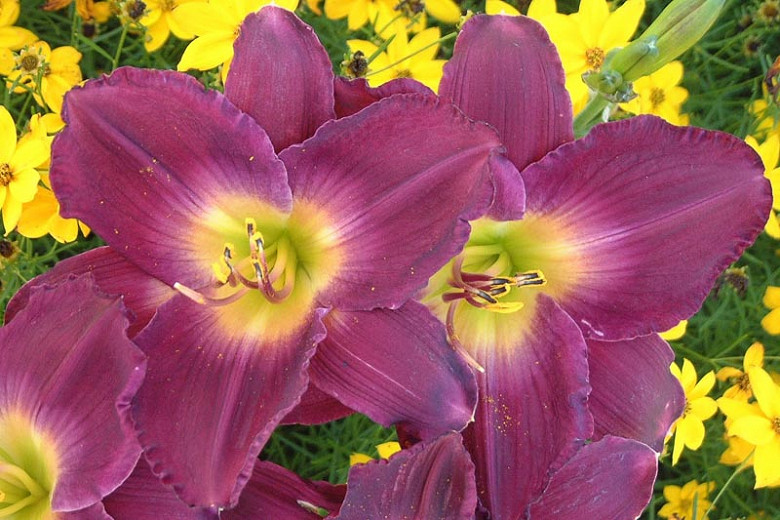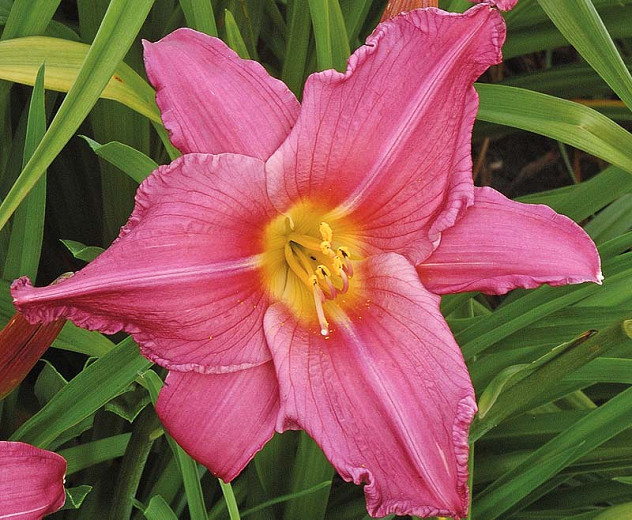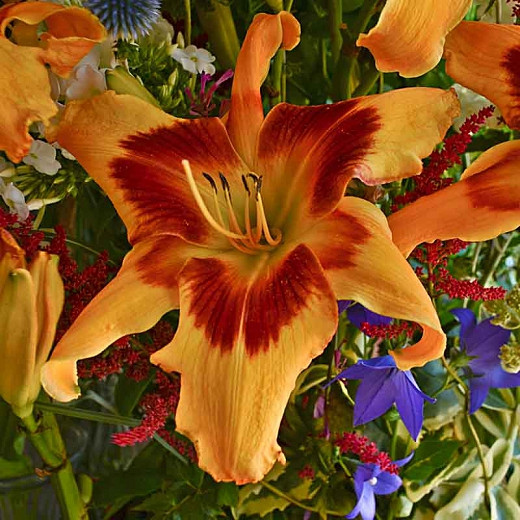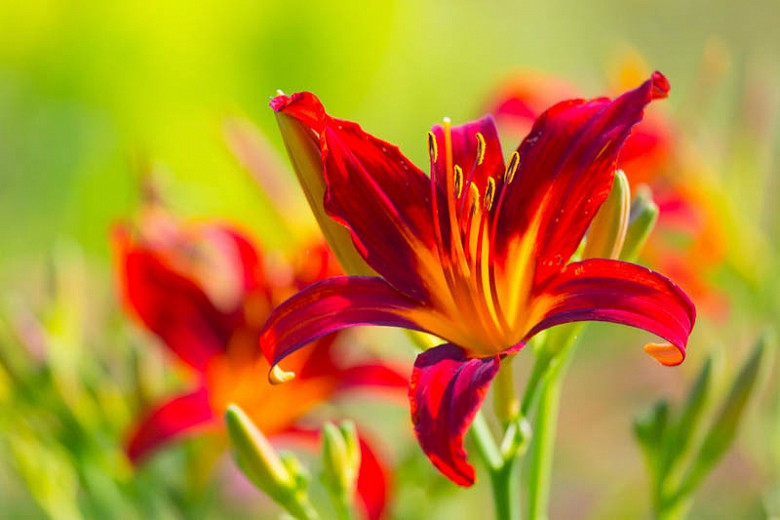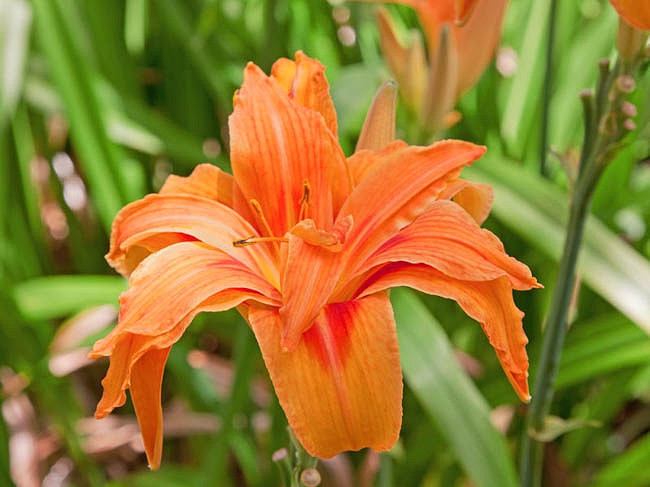Hemerocallis Country Melody (Daylily)
Sweetly fragrant, Hemerocallis 'Country Melody' is an attractive midseason Daylily that produces an abundance of large, elegantly ruffled, true pink flowers, up to 5.5 in. wide (14 cm), with a soft lemon yellow edge and beautifully accented by a soft yellow halo and pale pink midribs. It is nicely branched and has a great bud count. Each flower typically lasts no more than 24 hours (thus the common name 'Daylily'), opening up in the morning and withering during the forthcoming night, possibly replaced by another one on the same scape (flower stalk) the next day. Blooming in midsummer, this tetraploid Daylily is dormant (deciduous) and considered a 'Designer Daylily', on account of its exceptional bloom performance, vivid colored flowers, great winter hardiness, and vigorous habit.
- Grows up to 30 in. tall (75 cm) and spreads slowly via rhizomes to 18-24 in. (45-60 cm).
- An ideal choice for shrub borders or perennial beds, as ground covers on slopes or in containers near the patio.
- Thriving in full sun or part sun in average, moist, well-drained soils, this Daylily is relatively pest free. While it performs well in a wide range of soils, fertile loam is preferred. Tolerates heat and summer humidity, but thorough watering is required to ensure its foliage remains attractive!
- Often called the 'perfect perennial' because of its numerous qualities: showy flowers, drought tolerance, heat stress immunity, ability to grow in most hardiness zones, and low care requirements, this Daylily is a remarkable and stunning addition to the garden.
- Daylilies attract butterflies and hummingbirds but are toxic to cats. Rabbits tend to avoid daylilies.
- No serious pest or disease issues. Keep an eye out for mites, aphids, thrips, or daylily rust.
- The best time to plant Daylilies is in early fall or early spring.
- After flowering, remove spent blooms and seedpods to improve the appearance and encourage rebloom. When all the flowers on a scape are finished, cut off the scape close to ground level. Remove dead foliage from daylilies as they die back in the fall.
- Bred by Klehm in 1987, it won multiple awards, including the Honorable Mention of the American Daylily Society in 1990 and the EFA–Eugene S. Foster Award in 1991 (Awarded to the best late-blooming cultivars).
Requirements
| Hardiness | 3 – 9 |
|---|---|
| Heat Zones | 2 – 12 |
| Climate Zones | 1, 2, 3, 4, 5, 6, 7, 8, 9, 10, 11, 12, 13, 14, 15, 16, 17, 18, 19, 20, 21, 22, 23, 24, H1, H2 |
| Plant Type | Perennials |
| Plant Family | Hemerocallis – Daylilies |
| Exposure | Full Sun, Partial Sun |
| Season of Interest | Summer (Mid) |
| Height | 2' – 3' (60cm – 90cm) |
| Spread | 1' – 2' (30cm – 60cm) |
| Spacing | 18″ – 24″ (45cm – 60cm) |
| Water Needs | Average |
| Maintenance | Low |
| Soil Type | Chalk, Clay, Loam |
| Soil pH | Acid, Alkaline, Neutral |
| Soil Drainage | Moist but Well-Drained, Well-Drained |
| Characteristics | Fragrant, Plant of Merit, Showy |
| Tolerance | Drought, Rabbit |
| Attracts | Butterflies, Hummingbirds |
| Garden Uses | Beds and Borders, Edging, Ground Covers, Patio and Containers |
| Garden Styles | City and Courtyard, Informal and Cottage, Prairie and Meadow, Traditional Garden |
